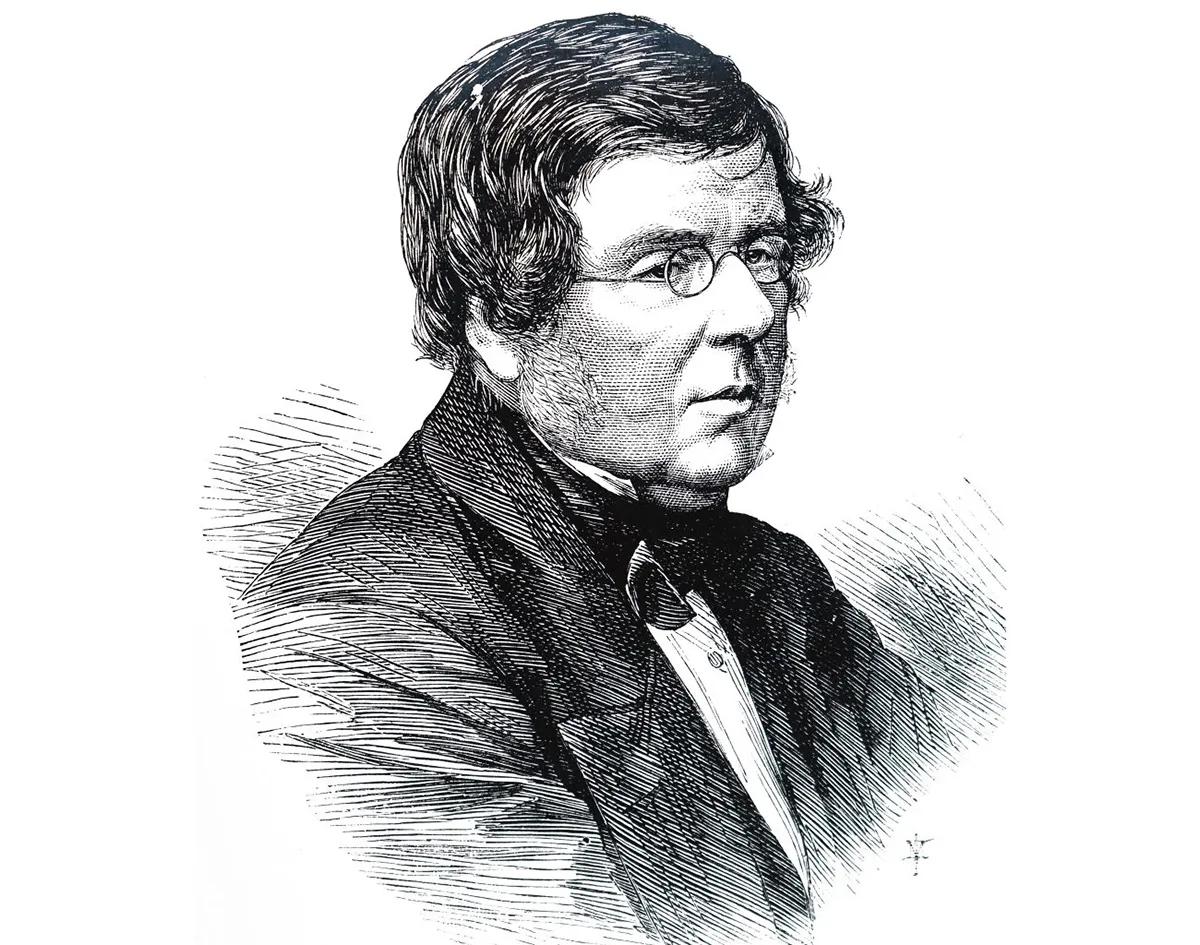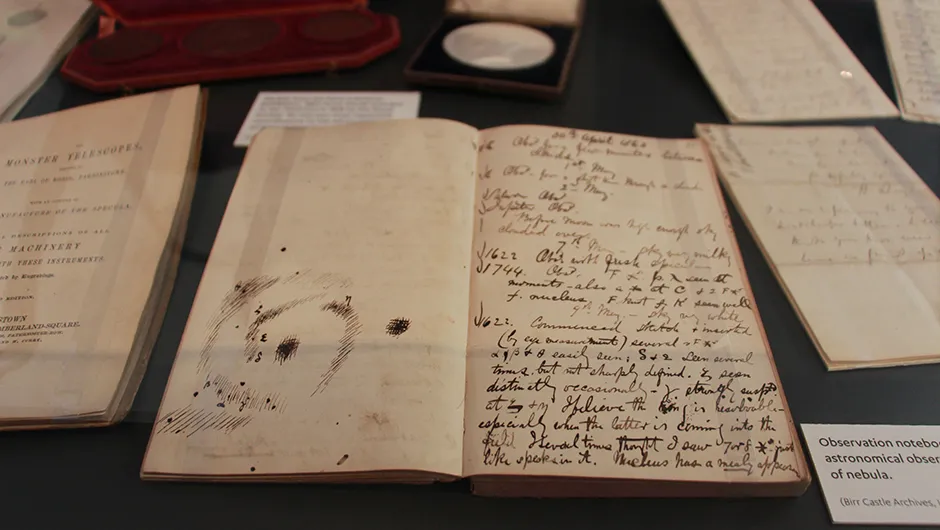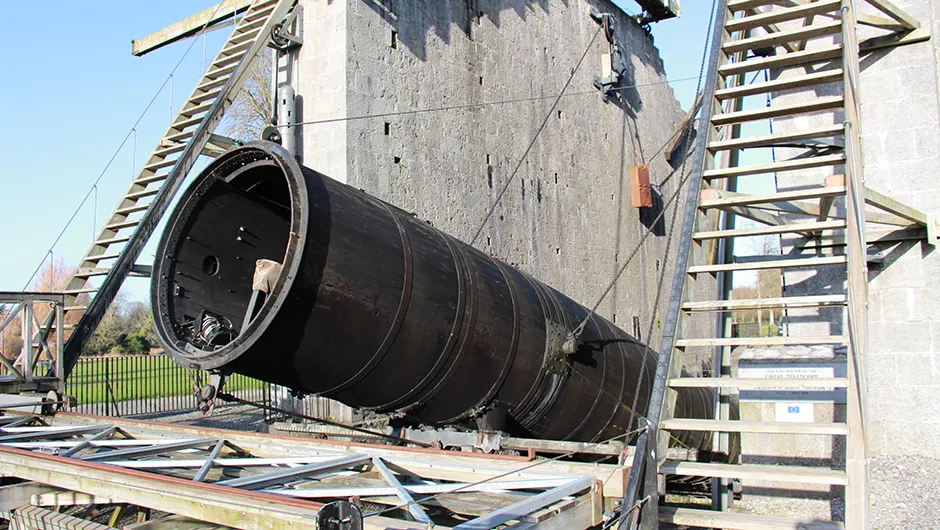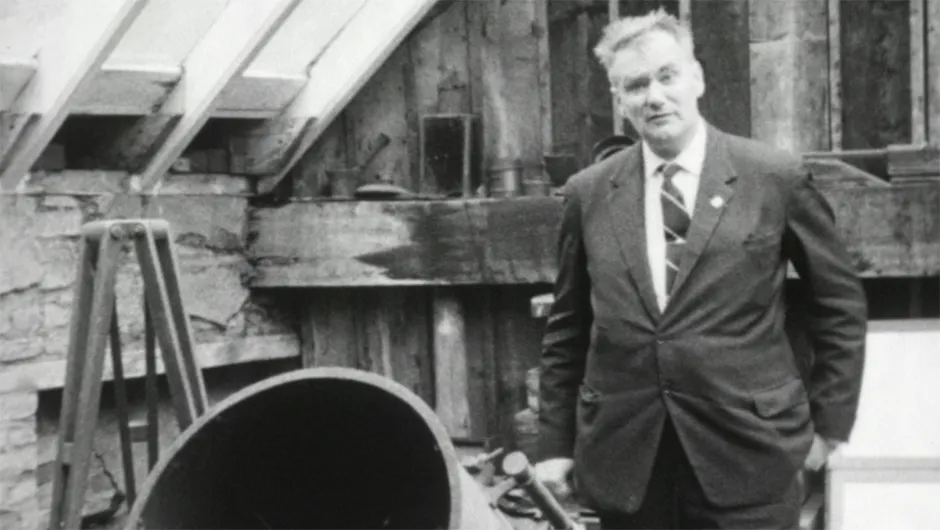There was a time in the 19th Century when, if you wanted to peer deeper into space than anyone on Earth had done before, Ireland was the place to go.Situated in the grounds of Birr Castle in the Irish midlands sat the Leviathan of Parsonstown, a 72-inch reflecting telescope the like of which had never been seen before.
The telescope was built by William Parsons, the third Earl of Rosse, and completed in 1845.
At the time, it was the biggest telescope in the world and today it stands proudly in the castle demesne, refurbished and modernised, its history proudly preserved in the adjoining Historic Science Centre.

How was the Leviathan of Parsonstown constructed?
William Parsons already had experience in telescope-building by way of a 36-inch Newtonian reflector that he constructed at Birr in 1839.
Much of his time and energy went into crafting the optics using copper and tin alloy, and Parsons even built his own steam-driven engine to facilitate the grinding of the mirror.
Soon the Earl set his sights on constructing a 72-inch telescope, which would of course require a bigger mirror.This was duly cast using a copper alloy called speculum in April 1842, but was broken a month later.
Undeterred, Parsons began casting another, including a second one for use when the primary mirror was being polished.
Walls approximately 21m long and 15m high were built during 1843 and 1844 to house the telescope.
While these walls would ultimately restrict its range of movement, they were a sign that Lord Rosse would be happier with a scope that operated at a basic level, rather than have the project fail due to being overambitious.
As a result, total viewing time for an object on the celestial equator is said to have been limited to one hour each night.
The finished product was a tube 17.5m long and 2.5m in diameter at its widest point, moved via a cable chain and pulley system controlled by three assistants.

What was the Great Leviathan telescope used for?
Only too aware of his own inadequacies as an observer, the Earl called upon Thomas Romney Robinson, then director at Armagh Observatory in Ulster, and the English astronomer Sir James South, who both arrived at Birr in February 1845.
The first object seen through the Leviathan was Castor in Gemini, followed by star cluster M67.
In time it would seek out familiar deep-sky objects like the Whirlpool Galaxy, the Orion Nebula and Owl Nebula, and many more, offering views of these objects in greater clarity than had ever been achieved before.

Parsons died in 1867, but by this stage his son Lawrence was already interested in astronomy.
The fourth Earl tried his hand at spectroscopy, but much of this work was carried out using the 36-inch, given the limitations of the Leviathan.
The fourth Earl and Dublin-born astronomer Sir Robert Ball worked together, studying the spectra of nebulae, and Ball was also present when the Leviathan captured the great Leonid meteor shower of 1866.

Dr John Louis Emil Dreyer used both telescopes between 1874 and 1878, observing nebulae that would be added to the later editions of William Herschel’s Catalogue of Nebulae and Clusters of Stars, originally published in 1786.
Dreyer published his New General Catalogue of Clusters and Nebulae in 1888 when he was director at Armagh Observatory, many of which had been discovered during his time at Birr.
The fourth Earl, meanwhile, turned his attentions closer to home, using the 36-inch telescope to focus the radiation of the Moon onto thermocouples and thus calculate its surface temperature.
He eventually settled on 92°C, before later revising that figure to about 100°C.
The calculations may have measured only the maximum heat on the Moon’s equator, but Lord Rosse’s results were remarkably accurate nevertheless, as modern observations and the Apollo missions have shown.
Further work by the fourth Earl with the 72-inch Leviathan revealed the positions of the four satellites around Uranus and, in September 1877, confirmed the existence of the Martian moons Phobos and Deimos, which had been spotted by Asaph Hall at the US Naval Observatory the month before.
In 1880, German astronomer Otto Boeddicker arrived to help the fourth Earl with his ongoing lunar heat calculations.
In 1882, Boeddicker published his Notes on the Physical Appearance of the Planet Jupiter During the Season 1880-1, which he had compiled using the Leviathan.

Restoration of the Great Leviathan
After the fourth Earl’s death in 1908 neither the 72-inch nor the 36-inch were used again.
The Leviathan was eventually dismantled and its mirror was sent to the Science Museum in London, where it remains today.
"The telescope started to fall into disrepair and became dangerous, so the machinery, staircases and galleries were all dismantled and demolished,” says the current Lord Rosse, Brendan Parsons.
"It became a sad ruin until one or two characters started saying that we should restore the great telescope and get it working again. Most instrumental in that respect was Sir Patrick Moore.
"I remember when he came to Birr and began tearing the ivy off the walls of the telescope, showing us, as he would say, what we should jolly well do about it! That led to the restoration of the telescope as a working instrument."
The project was taken up in the 1990s by Michael Tubridy, a structural engineer from the southwest of Ireland and former member of the celebrated traditional music group The Chieftains.
"The shell of the telescope was still there, but a lot of it was on the ground and the base was rotted away," he says. "The walls were covered with ivy and shrubs, and most of the machinery was gone.
"I was able to use Ordnance Survey maps made in the 1850s or so and found other accounts written at the time the telescope was in operation.
"I visited the Royal Astronomical Society and the Royal Society in London, the Royal Dublin Society and the Armagh Observatory.The very mention of the Leviathan opened a lot of doors to me!"

Second light at Birr Castle
Tubridy’s work lasted between 1994 and 1996, with the grand reopening scheduled for 1997 in Birr Castle in front of a crowd of astronomers, onlookers and then Irish President Mary Robinson.
New optics matching the original design had been constructed by Dr David Brooks at University College London, along with eyepieces and mounts.
"We demonstrated the scope’s movement by hand first of all, the way it would have been done in the 1940s," says Tubridy. "It was a lovely sunny day and everyone was sitting on the grass watching the telescope come back to life.
"As we moved it to and fro, I was able to say what the Leviathan had looked at when it was in those positions. But the telescope was rebuilt to be operated automatically and so we showed that off, too.
|I couldn’t have been more pleased with how it operated because everything went so well."
Today, while the Leviathan may no longer be used for scientific work, it nevertheless stands as a reminder to the origins of astronomy in Birr, and how the ingenuity of the 3rd Earl of Rosse forever changed how we view the skies.
